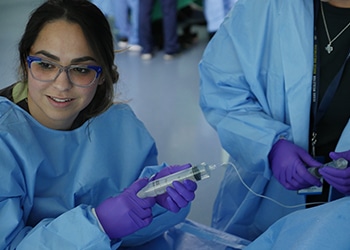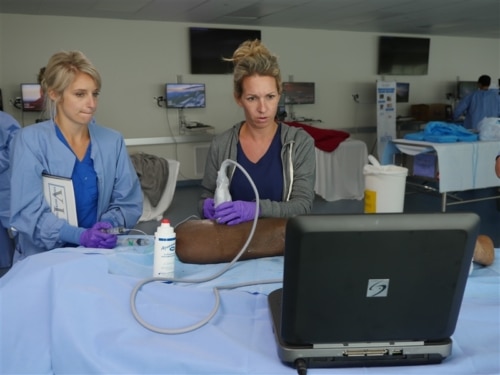Point of Care Ultrasound (POCUS) assessment is fast becoming an integral way to make a fast and accurate assessment of patients for clinical decision-making. It is performed at the bedside and has been proven to be accurate and repeatable for serial assessments of unstable patients to help guide their care. Some have stated that "ultrasound will soon replace the stethoscope".
This course teaches CRNAs, nurse practitioners, physician assistants, physicians, and other allied health professionals the crucial skill of point-of-care ultrasound (POCUS) as an assessment tool.
Using Maverick's proven learning process developed by experts in education and utilizing the "flipped classroom", students learn at their own pace and at their convenience. The online didactic program consists of 8 modules that guide you through the foundational knowledge necessary for the hand's-on lab.
Following completion of the online didactic modules, students then attend a
1-day, hands-on lab where they scan live models and practice vascular access techniques on gel phantoms with low student-to-instructor ratios.
Online modules include:
- Introduction to ultrasound including a brief history of US development and the physics of how the US works to produce an image on screen.
- POCUS for Gastric Assessment
- POCUS for peripheral vascular access
- POCUS for Internal Jugular access
- Cardiac assessment for normal cardiac function and commonly seen pathological conditions
- Pulmonary assessment for normal function and common problems.
- eFast assessment for trauma and hemodynamically unstable patients
- POCUS for DVT assessment



